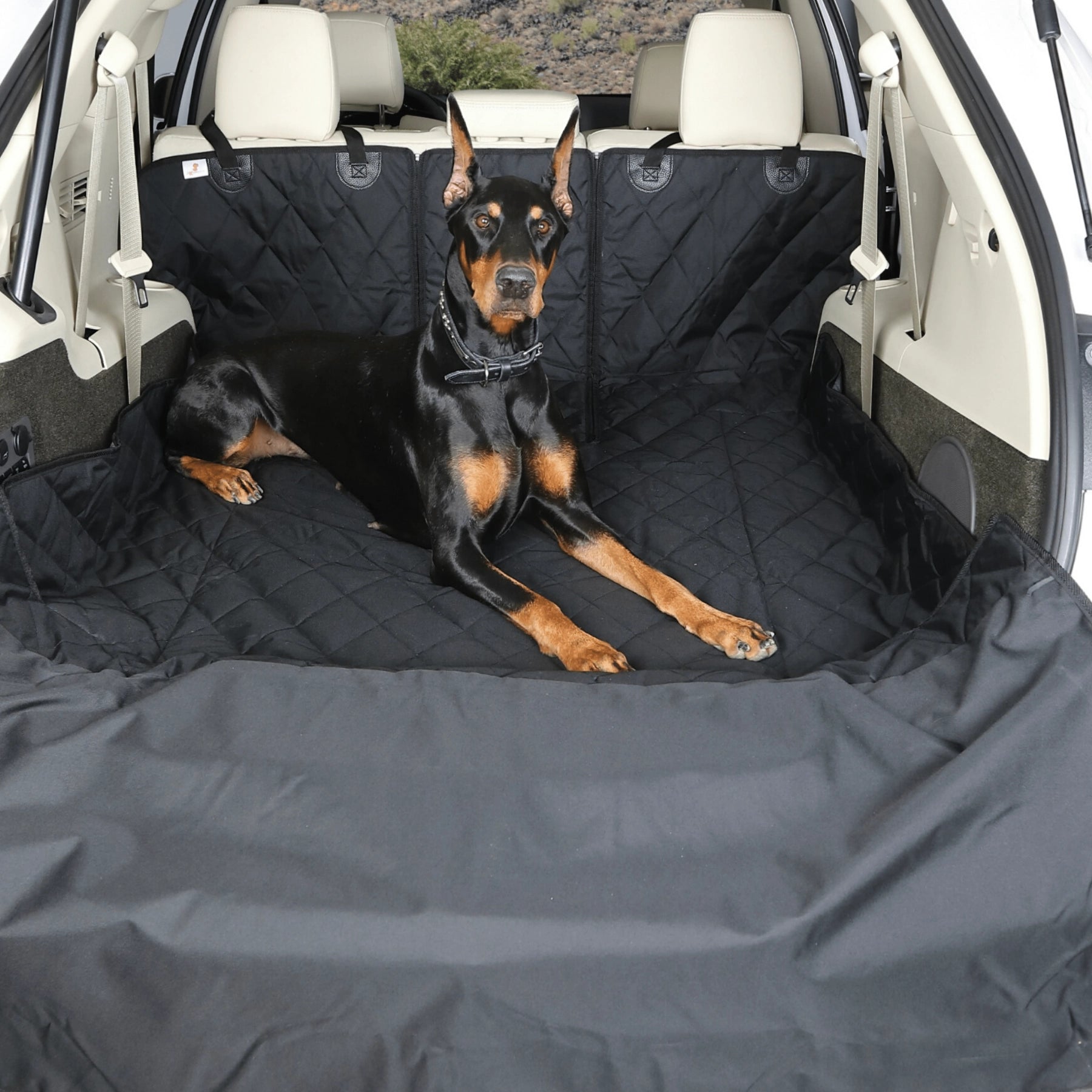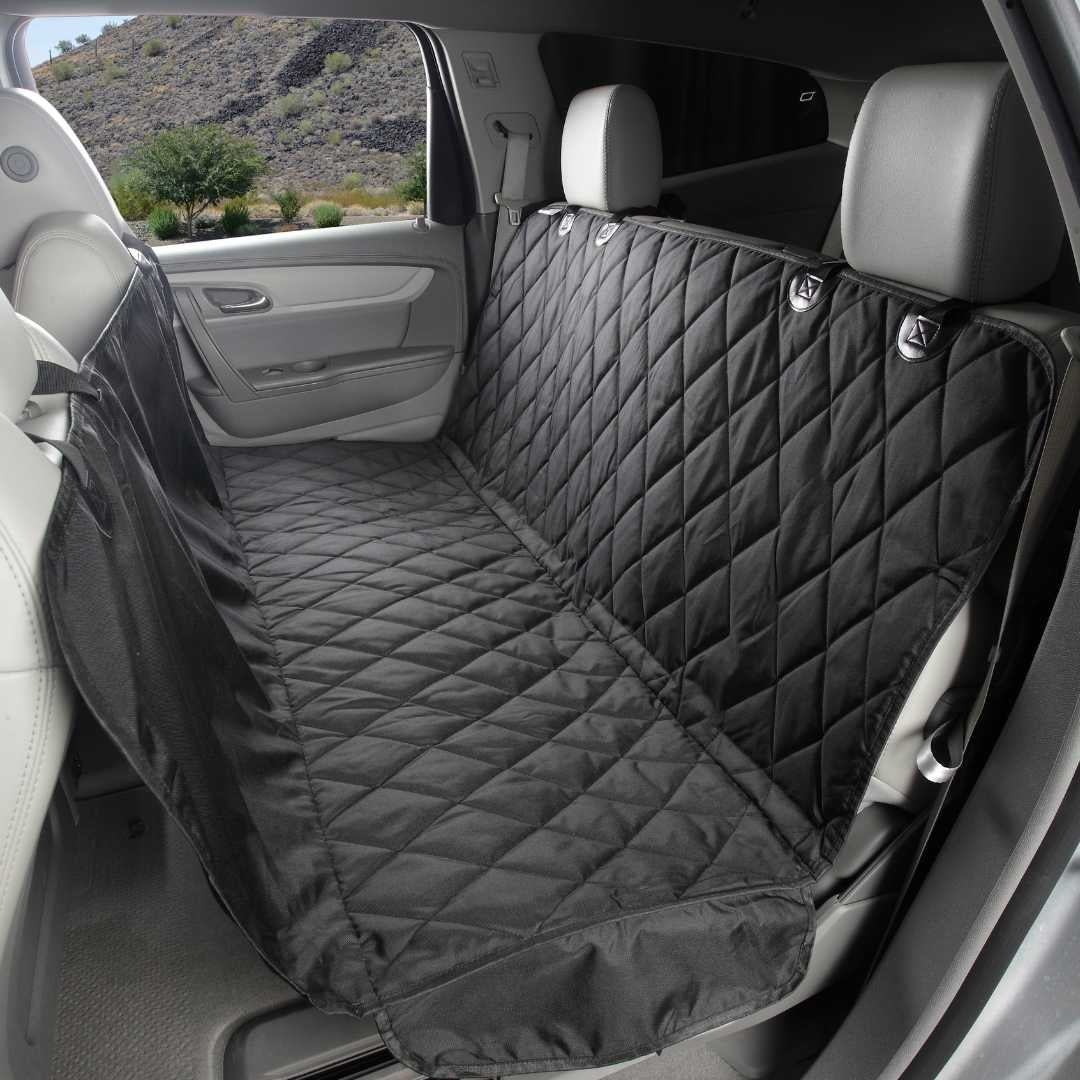Finding the Perfect Hiking Distance for Your Dog's Safety and Enjoyment
When was the last time you paused to consider whether your dog's hike might be a little too challenging? While it's tempting to think your dog can handle anything, dog hiking distance really depends on more than just enthusiasm—factors like breed, age, weather, fitness, and even heat sensitivity play a huge role in pet safety and enjoyment. Experts remind us that overdoing it can lead to paw injuries, heat stress, or exhaustion, especially if you and your dog don't hike regularly.
Here, you'll find straightforward tips for figuring out safe hiking limits for your dog and how to spot signs of dog fatigue. We'll also break down trail safety, hiking preparation, and ways to protect your car from muddy paws for stress-free pet travel after any outdoor adventure.
What You'll Learn.
- Key factors that determine your dog's hiking endurance limits
- Warning signs that indicate your dog needs rest or shorter distances
- Age and breed considerations for safe hiking distances
- Essential preparation tips for longer outdoor adventures
- How to protect your vehicle during muddy post-hike cleanup
Quick Summary
Determining how far to hike with your dog depends on their age, breed, health, and fitness level. Recognize signs of fatigue and use gear like paw protection to prevent injury. Always bring plenty of water, take frequent breaks, and invest in vehicle protection like the SUV Cargo Liner for Fold Down Seats to keep your car clean post-adventure.
Learn more about the productUnderstanding Dog Hiking Limitations
What Are the Key Factors That Determine Safe Hiking Distances?
- Age and Physical Condition - directly impacts endurance and recovery time
- Breed Size and Body Type - affects heat tolerance and stride efficiency
- Weather and Trail Conditions - influences energy expenditure and safety risks
- Training and Fitness Level - determines baseline endurance capacity
- Paw Protection and Gear - prevents injury and extends comfortable hiking time
Age and Physical Condition
Your dog's age is a huge part of canine endurance. Puppies under 18 months and older dogs over 7 years generally need shorter walks with regular stops. Young dogs have developing joints that can be stressed by too much activity, while senior dogs may slow down due to arthritis or reduced fitness. Before setting out, check with your vet if you're unsure about your dog's shape for trail adventures. See more hiking preparation tips.
- Puppies: Start with 15-30 minute walks, building up gradually as they grow and get used to activity
- Adult dogs: Usually good for 1-2 hours of moderate hiking, adjusting for energy and health
- Senior dogs: Shorter, gentler routes with more frequent breaks to rest
Why Age and Condition Matter
Understanding your dog's stage of life and current health makes it easier to set exercise limits, avoid soreness or injury, and help keep the experience upbeat for both of you.
Breed Size and Body Type
Breed characteristics play a role in how far your pet will comfortably travel. Large breeds may cover more ground in less time, but tend to heat up faster. Small breeds need more energy for each mile, making regular rests and careful distance planning important. Dogs with flat faces—think Bulldogs or Pugs—aren't the best fit for long, hot hikes due to breathing limits.
- Large breeds: With the right conditioning, often manage 5-10 miles but watch for signs of overheating
- Medium breeds: Can handle around 3-7 miles, depending on their fitness
- Small breeds: 1-3 miles with extra rest and water are safest
How Body Type Affects Hiking
Think about stride, stamina, and any special needs when choosing a trail. Check your pet's pace and comfort regularly along the route.
"Every dog is different, and breed, age, and physical fitness all factor into their hiking ability. Always consult with your vet on what's right for your dog—and remember, sometimes less is more when it comes to distance, especially in challenging conditions."
Weather and Trail Conditions
Weather considerations and trail terrain affect dog fitness levels and trail safety. Dogs do not handle heat like humans do, so distances should be scaled back during hot spells. Rocky or steep trails take more out of your dog's energy bank and increase injury risks. Always pack water and a portable bowl—never let your dog drink from questionable streams. Read more about trail safety.
- Hot weather: Cut distance in half and boost water breaks—watch thick-coated or senior dogs especially
- Steep climbs: Treat elevation gain as double the flat-ground distance
- Rough ground: More likely to cause paw injuries, requiring careful gear choices or turning back sooner

Adapting to Trail Conditions
Before heading out, always check trail and weather reports and keep a close eye on your dog's behavior as you hike. Setting appropriate exercise limits protects them from overexertion.
Training and Fitness Level
Hiking conditioning for dogs mirrors what works for people: start small and work up. If you hike frequently, your dog's fitness will increase over time. If hikes are rare, don't expect a long trek to go well—being a weekend warrior shows in your pet's recovery. A fit, well-trained dog is more likely to keep up safely, especially if obedience training is in place for trail encounters.
- Beginner: 30-minute gentle walks are a good start
- Intermediate: 2-3 hour outings work if your dog gets regular exercise
- Advanced: Well-conditioned dogs can join for 4-6 hour hikes, but be ready for breaks
Fitness Training Benefits
Working up your dog's endurance slowly lowers the risk of soreness, injury, and stress, making each adventure a positive memory. For more training tips, see our training guide.
Paw Protection and Gear
Paw protection can make or break your day outdoors. Hot ground, rocky paths, snow, and mud all put wear and tear on your dog's feet. Durable booties and quality harnesses support comfort, avoid injuries, and keep you hiking longer together. We always pack a spare leash, poop bags, a water bowl, and keep a first aid kit handy—these essentials help manage messes and minor accidents effortlessly.
- Paw protection: Booties are smart for uneasy terrain and temperature extremes
- Supportive harness: Eases strain and helps guide your dog safely, especially on longer routes
- Cooling vest or jacket: For added comfort in warm or unpredictable conditions
Why Quality Gear Matters
Using reliable hiking gear keeps your outings fun and safe. Thoughtful equipment choices help you respond quickly to trail safety needs, manage big messes, and keep your bond strong while you explore together. Discover more gear tips in our dog travel safety accessories article.
Building a Personalized Hiking Strategy for Your Dog's Safety
If you're wondering how long of a hike is too long for your dog, building a thoughtful hiking strategy is the best place to start. You've probably noticed your dog's stamina can shift with age, breed, health, and weather. Tuning in to those changes and using condition monitoring makes a big difference. Think of this as risk management—choosing distances that fit your dog's unique abilities, so every outing remains positive.
We've found that the right adventure preparation keeps things simple—for your dog's safety and your own peace of mind. If you're regularly hiking, gear up with a durable SUV Cargo Liner for Fold Down Seats. It takes the stress out of messy returns, protecting your car from muddy paws, fur, and everything else a trail day brings.
Establishing Baseline Distance Limits
- Gauge your dog's maximum comfortable walk, then add about 25% as you try easy hikes.
- Watch how your dog breathes, pants, and carries energy at every stage—stay alert for fatigue or stiffness.
- Plan to turn around when you've covered roughly 40% of your intended distance, giving you a chance to reassess your dog's condition and ensure plenty of energy for the return.
- Note what works: Keep a simple log of distances, weather, and how your dog performed for future reference.
Progressive Training and Conditioning Benefits
- Cardiovascular endurance gradually improves with six to eight weeks of regular walks and varied terrain.
- Paw pads build resilience, helping prevent injuries when you're navigating rocks, dirt, or snow.
- Steady training enhances heat tolerance and shortens recovery after each hike.
Your dog's comfort and well-being should drive your hiking distance. Regular conditioning is more effective—and safer—than sporadic big adventures. Before each trek, include these safety protocols: bring water and a foldable bowl, use a sturdy six-foot leash, have an extra leash handy, and keep ID tags up to date. Nothing simplifies clean-up quite like our SUV Cargo Liner for Fold Down Seats, letting you focus on exploring together instead of worrying about protecting your vehicle.
Vehicle Protection Solution
SUV Cargo Liner for Fold Down Seats: Reliable Cleanup After Every Hike
"Love this product! It's saved my backseat from muddy paws and spills. Super easy to install and clean!"
Safe Hiking Success
We've talked about how choosing the right hiking distance means paying attention to your dog's age, breed, fitness, and how well they handle the current trail and weather. Factoring in things like leash length, hydration, trail obstacles, and the right equipment helps you plan responsible hikes while making sure your dog stays safe and happy during every adventure. For more advice, check out our trail etiquette guide.
Regular conditioning with a thoughtful approach to distance planning sets you and your dog up for more enjoyable journeys and stronger outdoor bonding, making hiking success a regular part of your life together.
Ready to Keep Every Adventure Clean?
Give your dog the safe, adventure-filled life they crave and keep your vehicle looking its best. Learn more about how the 4Knines SUV Cargo Liner keeps messes contained and join thousands of smart pet owners who know how to plan ahead.
Learn More©copyright 2025
4Knines, all rights reserved.







